Anthology of Anthorrorlogies
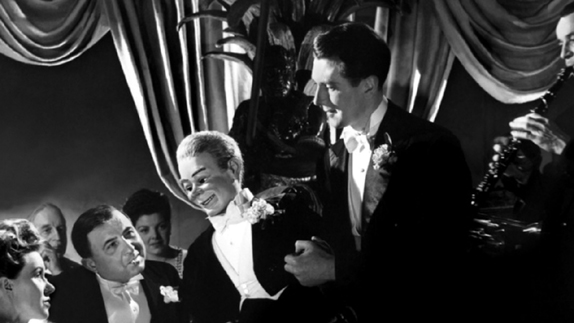

Horror anthologies, and anthologies in general, are by their very nature doomed to be uneven. It’s a rare thing to watch one all the way through and unconditionally love every single chapter. Their multi-narrative structure, often bound together by a common theme/concept (the found footage of V/H/S) or an established brand (Tales from the Crypt: EC Comics), usually means fluctuations in tone, style – and yes quality – are expected, something even more pronounced when you have different writers and directors tackling each story.
On the bright side though, they’re a pretty damn cool format for a number of reasons:
1. More Bang For Your Buck
For the price of one movie, you get THREE or FOUR mini-movies!
2. Variety & Brevity
You get bored with one story, there’s another one around the corner soon.
3. Element of Surprise
Like a box of chocolates, you never know what you’re gonna get etc.
And while I don’t predict a resurgence of omnibus films at the level of popularity they were in the ‘60s and ‘70s, if more filmmakers decide to take advantage of the format to package horror stories, I definitely wouldn’t complain.
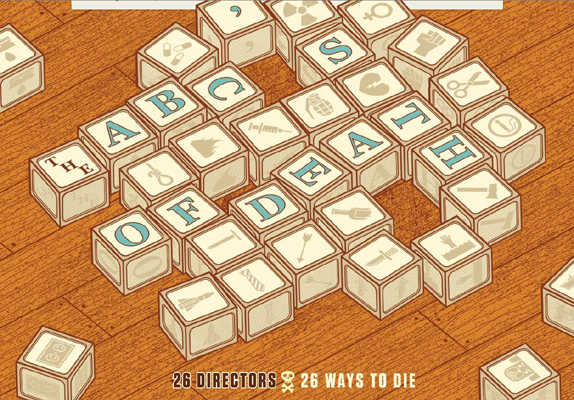
Following on the bloody footsteps of last year’s V/H/S, the upcoming The ABCs of Death has the most morbidly fun anthorrorlogy idea we’ve had in a while: using the English alphabet as a jumping-off point for 26 death-themed tales. To get you amped for its screenings in Auckland and Wellington (see: NZFF’s Autumn Events), here are several older films you should seek out if you’ve never seen an anthology horror before (they’re not necessarily the best, but ones I have a soft spot for):
TWILIGHT ZONE: THE MOVIE
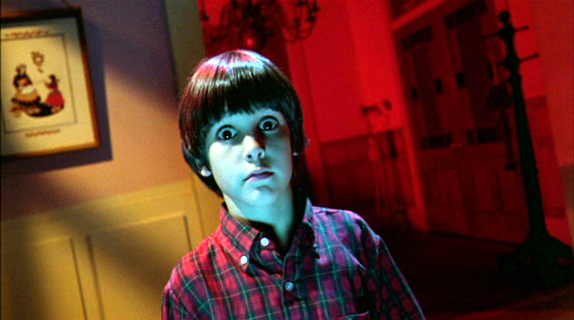
There’s a lot of irrevocable hate associated with Twilight Zone: The Movie (1983), mainly for the awful on-set tragedy that killed Vic Morrow and two child actors, and also the fact that it didn’t successfully capture the feel of Rod Serling’s beloved TV series (1959-1964) that it’s based on. To enjoy the film, you really need to push aside the two opening acts – John Landis’ half-baked “Time Out” (which starred Morrow), and Steven Spielberg’s nostalgic schmaltz “Kick the Can” – as mediocre starters, then relish in the main course double of Joe Dante’s “It’s a Good Life” and George Miller’s “Nightmare at 20,000 Feet”. Awesome creature effects by Rob Bottin (The Thing) grace Dante’s trippy eye-popper about schoolteacher Kathleen Quinlan meeting a boy with an extremely strange family in an even stranger house; Miller’s wildly entertaining entry is powered by John Lithgow’s panicky, bugged-out performance as an aviophobic airline passenger who flips out upon seeing a goblin perched on the plane’s wing. This one nauseated me as a kid.
TRILOGY OF TERROR
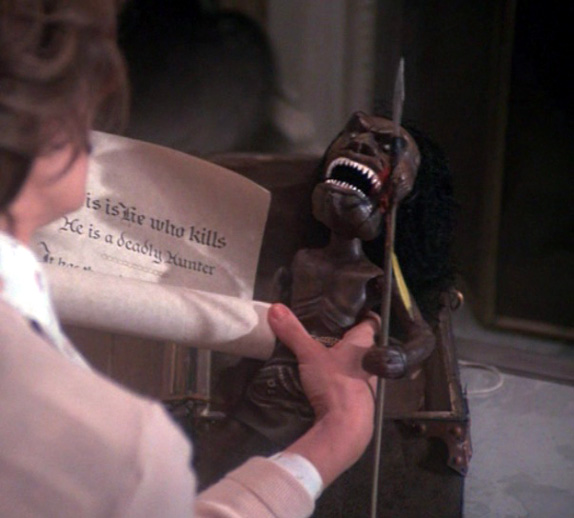
Three short stories by the prolific Richard Matheson (Duel, The Twilight Zone), directed by Dan Curtis (Dark Shadows, The Night Stalker), all starring Karen Black (Five Easy Pieces): what’s not to like? This 1975 made-for-TV anthology provides a tour de force acting showcase for Black, who plays four different characters with zesty aplomb. In the opening “Julie”, she’s an English lit teacher who gets romantically involved with a student, only to find herself blackmailed; “Millicent and Therese” gives her dual sister roles in a perverse tale of incest, voodoo and sibling rivalry; the humdinger of a finale, “Amelia”, pits her against a Zuni fetish doll come to life. At a brisk 72 minutes, Trilogy of Terror is a tidy, well-crafted little set, the restraint of its first two segments easily upstaged the spine-chilling third, which remains a classic of its kind. That final shot: Holy crap! I wonder how many people shat their pants in front of the tube back then.
SPIRITS OF THE DEAD
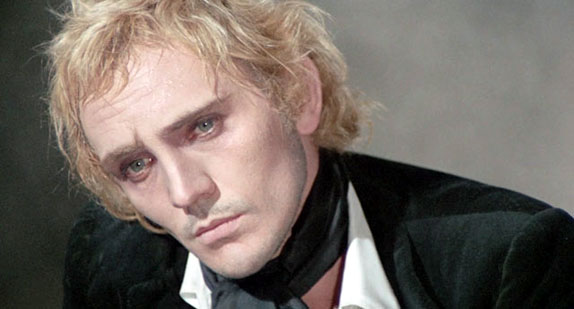
A mixed bag of Edgar Allan Poe stories interpreted by three top-flight European directors of the era: Roger Vadim, Louis Malle, Federico Fellini. Featuring self-destructive characters going off their rails, it’s a collection that goes for psychological headgames rather than gruesome shocks. “Metzengerstein” is a limp start, allowing Vadim (Barbarella) another chance to listlessly ogle at Jane Fonda, who plays a power-mad 16th century countess who lusts after her cousin (Fonda’s real-life bro, Peter!). Malle’s “William Wilson” picks up the macabre intrigue a bit, with Alain Delon as a sadistic Austrian soldier who faces his doppelganger. But again, as with most anthologies, the most striking is saved for last: Fellini’s “Toby Dammit”, which teems with the director’s trademark visual excess, is an experience as messed-up and drug-smashed as its protagonist, an English actor (Terence Stamp) in Rome to shoot the “first Catholic western”. I actually find myself preferring Malle’s as a piece of Poe narrative, but Fellini has the upper hand as far as arresting imagery goes.
BLACK SABBATH
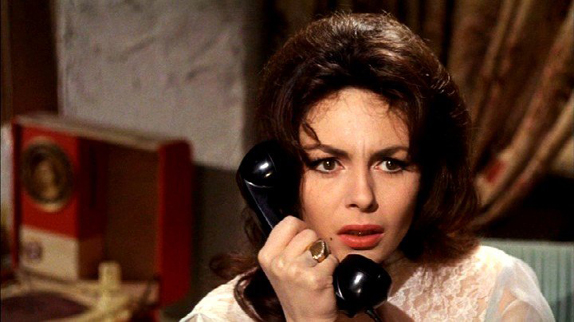
With no duds, and one masterpiece, Italian horror maestro Mario Bava’s Black Sabbath (1963) is one of the best horror anthologies out there, and arguably the most stylishly beautiful. “The Telephone” is a suspenseful proto-giallo with a creepy stalker/caller plot that plays like a blueprint for When a Stranger Calls, which in turn inspired Scream. Based on an Aleksey Tolstoy story, the atmospheric, Gothically charged “The Wurdulak” stars Boris Karloff (who also introduces the film) as a patriarch of a family who returns from a vampire-hunting trip a noticeably changed man. Now “A Drop of Water” is quite something. I’m not easily spooked but this third segment, about a nurse (Jacqueline Pierreux) who steals a ring from a dead medium, scares the shit out of me – it’s probably the most perfectly eerie short film ever made. Black Sabbath is an ideal entry point into Bava’s cinema, a masterful demonstration of the sort of otherworldly magic the guy can produce on a soundstage with creative splashes of light and colour.
DEAD OF NIGHT

No anthology list would be complete without a mention of Dead of Night (1945), the great granddaddy of all omnibus films. This was notable for being an uncharacteristic horror effort from Britain’s Ealing Studios, who were primarily known for their comedies, but it’s among their stellar achievements, a supremely consistent, enormously influential vision brought together by regulars from their stable: Basil Dearden, Alberto Calvacanti, Charles Chricton, Robert Hamer. The Chinese box-like framing story – an architect (Mervyn Jones) visiting a country house and sensing he’s already met all the guests there – contains a superb sting which wraps everything up in a satisfactorily bonkers manner. “The Haunted Mirror” and “The Ventriloquist”, the third and fifth tales, stand out for creepiness; “Golfing Story” is an obligatory goof, wedged between the latter two for relief; the first two shorter films are fine warm-ups. A chilling, smart, textbook example of supernatural storytelling.
BODY BAGS
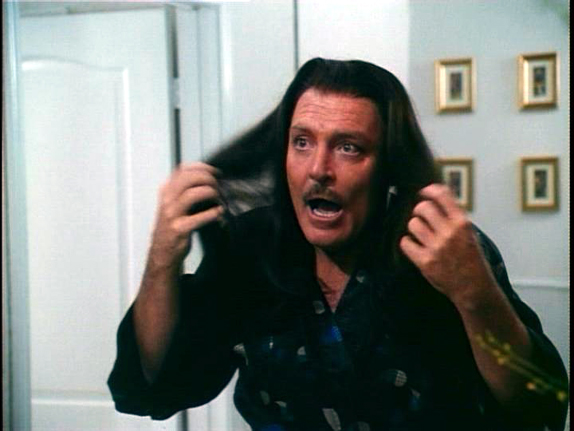
Including this as a bonus pick. A failed pilot for a Showtime series, this 1993 throwback to Tales from the Crypt et al was somewhat out of fashion when it came out, but hangs together agreeably and is irresistibly stacked with horror royalty. John Carpenter’s campy intros – as a rather corpse-like coroner – are lame and terribly unfunny, but his segments are the strongest: “The Gas Station” is nothing new, but a sharply directed slice of slasher excitement, and “Hair”, which stars a hilarious Stacy Keach trying to cure his hair loss with alternative means, is likeably goofy, its satirical touches reminiscent of Carpenter’s They Live. Tobe Hooper ratchets up the gore factor with “Eye”, a descent-into-madness thriller that sees Mark Hamill giving the most over-the-top performance of his career playing a baseball player who loses his eye in a car accident and receives a transplant whose previous owner was a psycho killer. Look out for cameos from Sam Raimi, Wes Craven, and Hooper. Surprised at how much fun I had revisiting this, which I remember as being one of the first laser discs I ever watched.


















